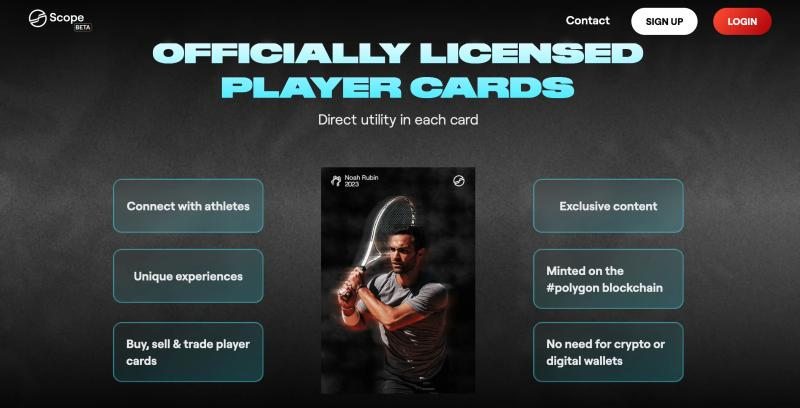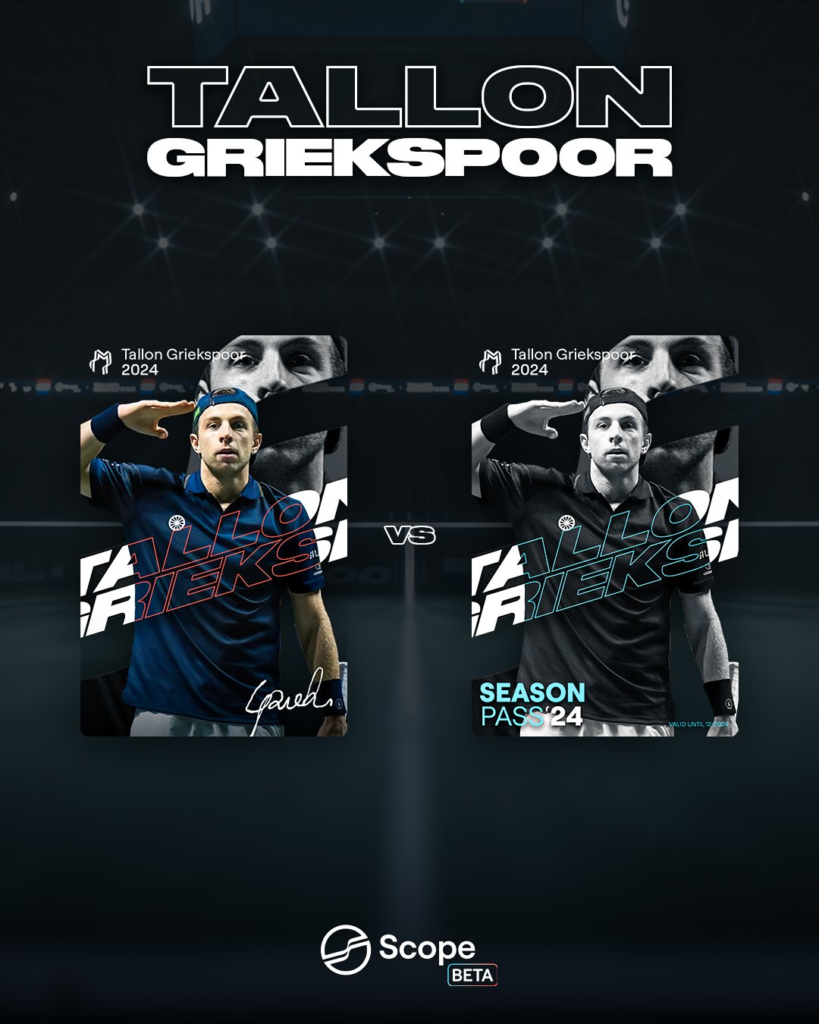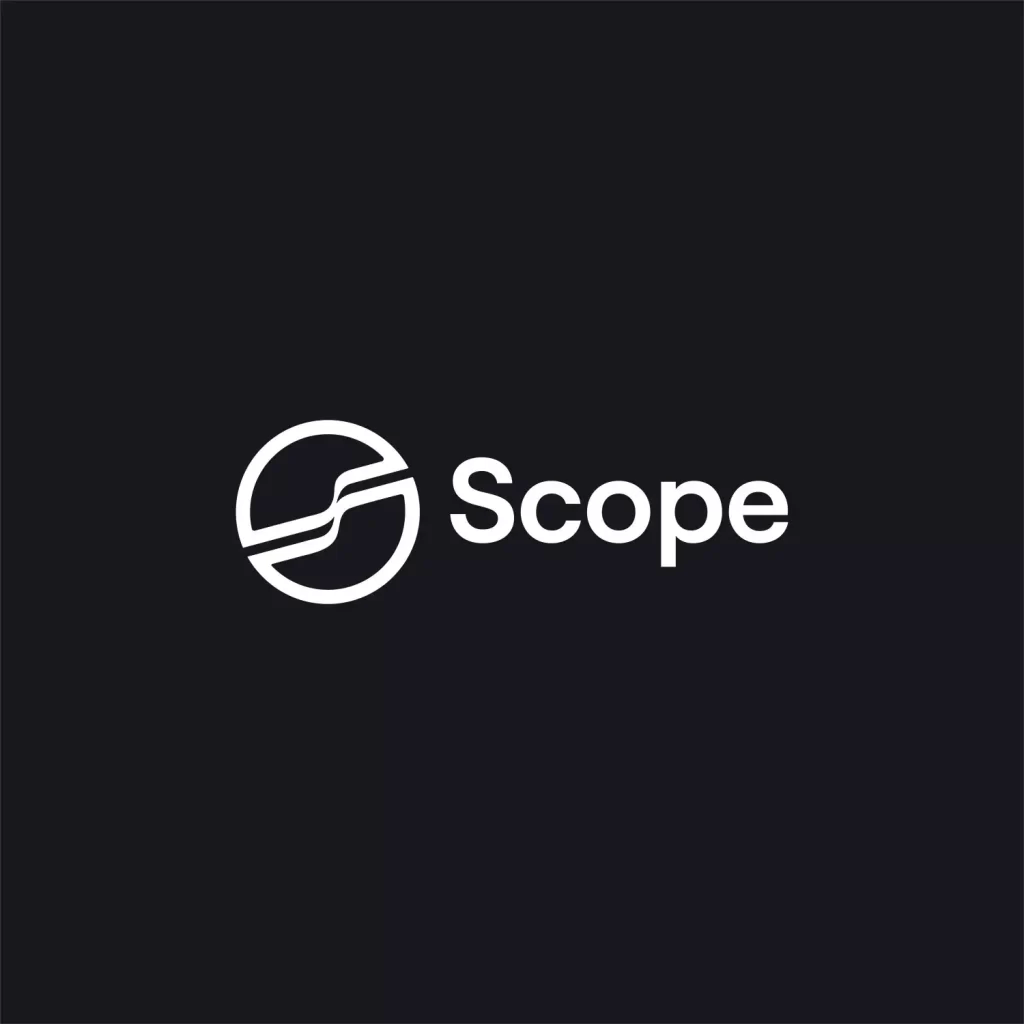Fans are more connected to their favorite athletes than ever before.
With the advent of social media, players from all sports and levels can build massive audiences and reach fans in ways they couldn’t before.
Scope Sports is taking that relationship a step further all while allowing athletes to make additional money from their biggest fans and supporters.
Maximilian Stehling and Laurent Isnard started Scope Sports to provide an infrastructure that allows all individual athletes to monetize their top fans without being at the mercy of sponsors.
While they are initially focusing the platform specifically on tennis players, their vision is to support multiple sports and athletes across the world.
In this interview, we discuss how they came up with the idea, the best use cases for blockchain in sports, and advice for other founders looking to build in the sports space.
Hello, who are you and what is the name of your company?
I am Maximilian Stehling, co-founder of Scope Sports. I started Scope in 2022 as a result of my senior thesis.
Scope is a platform that allows athletes to sell access passes to athlete-run fan clubs, where fans get access to premium behind-the-scenes content, live chat with athletes, real-life experiences, and merch and ticket giveaways.
Our infrastructure helps athletes tell their stories in the way that they choose to, and build organic relationships with their fans.
I played competitive tennis at the junior and university levels. Through my research, I was exploring how blockchain could help generate off-the-court revenue for tennis players without being fully dependent on sponsors. I quickly noticed an opportunity when it came to content.
Most tennis content, unlike in team sports where franchises are spearheading this effort, was produced by sponsors and tournaments, keeping their own best interests in mind rather than the athletes.
This translated into the completely skewed focus of the sport we see today, where the top 10-20 players are a lot more popular and make much more than the rest.
I realized there was an opportunity to provide athletes with an infrastructure to generate and monetize their own content directly through their fans, and not depend on other entities to get their image and stories out there.
Athletes were quickly interested in our product and slowly brought their fans onto the platform.
How did you come up with the idea and what was the process of getting the company off the ground?
I met my co-founder Laurent Isanrd when we were kids in school. He is also an avid sports fan and has a background in blockchain so I shared my initial thoughts with him.
He jumped at the idea and we set out to build a team, a product, and raise money. We found Simon, our CTO, a few weeks into the project through an advisor of ours, and managed to raise a pre-seed round shortly after.
With these elements in place, we started conceptualizing the product and creating an MVP. We always kept fans and players very close to the product, taking in their feedback almost daily until we got to the beta product we have today.
Noah Rubin, Scope advisor and retired pro tennis player was key in helping us shape the product and sign our first few players.
As we have grown, one fundamental thing is keeping people who are more experienced than us around us and learning as much as we can from them.
With a beta version of the platform and 12 pro players signed (one in the top 30), we started generating revenue.
We’ve been selling access passes to fan clubs for over 6 months now, keep onboarding new players, and due to the huge gap in the market, we have quickly become the best content producers in tennis.
How is the company doing today and what is the long-term vision?
Today, although still in the beta phase, we generate revenue for the 10 live tennis players on the platform.
Scope users have unprecedented access to high-quality content, rewards such as tickets to matches and merch, and a live chat with their favorite players.
We’ve seen some great interactions between fans and athletes take place that don’t happen anywhere else, both when athletes are doing well on tour and when they are struggling, creating a great environment for everybody.
Our growth rate has been accelerating over the last three months, both in terms of new users and total revenue generated.
Although we are not profitable yet, with these metrics and growth rate, it looks like we will break even in early 2025, with about 30 players on board.
Currently, all our athlete deals are rev-shares, where the majority of primary sales go to the athlete.
In the long term, we want to create the best fan clubs in the world and be market leaders in the fan engagement space.
Our vision is that in a few years, if a fan wants to meet, support, or get closer to a professional athlete of any sport at any level, they will go to Scope.
Top athletes could use the infrastructure to raise money for causes they are passionate about, collect data about their top fans, and upsell merch or experiences.
Up-and-coming athletes might use the platform to build their brand, attract new sponsors, gain a following, and share their stories with fans.
We’ve positioned ourselves well both in terms of network and product infrastructure to target many different sports.
There are so many incredible personalities in sports, and only a small percentage of them are shared in a way for fans to learn about and engage with.
We want to provide all athletes with a way to get their stories out, convey who they are as humans, and drive greater interaction between them and their fans.

Through starting the business have you learned anything particularly helpful or advantageous?
Mistakes are part of the journey, especially as first-time founders. Our biggest mistake was completely underestimating marketing.
The day we went live with the product, we put up an Instagram post and expected sales to just come rolling in.
This was a big lack of experience and learning moment for us.
We thought the rev-share we had with athletes would be enough incentive for them to bring their fans and generate revenue for us.
A tennis player’s job, however, is to play tennis, and bringing their fans onto a content-driven platform, no matter how much financial return there is to be made, is secondary.
We had to focus all our efforts on marketing and actually go to tennis tournaments where our players were playing and manually find our first customers.
Today, the process is a bit more automated as fans bring more fans and we are slowly building a name, but we are still working hard to find the best marketing strategies for Scope and how to maximize an athlete’s return on the platform.
What advice do you have for founders looking to raise capital?
What shocked me the most about early-stage fundraising is how unstructured and informal it is, at least that was the process for us. One day you have five pitches scheduled and on the next no responses, you might pitch to a multi-million dollar VC or a 30-year-old angel based in Bali.
You sometimes get instant responses and sometimes get month-old responses. You might have multiple meetings with someone, feel like you are close, and then they completely stop answering.
Rejection is a part of fundraising but should be taken with a grain of salt. It is important to stay true to your big-picture vision; however, you should always try to understand why people won’t invest, and what details need to be improved.
Fundraising is almost a full-time job within itself, and it is really about building meaningful relationships, fostering them, and having people buy into not only your business but you as a founder.
I would also say that something to keep in mind, and something we perhaps underestimated, is that it is a long process and not something that is done in a matter of days or weeks.
We’ve just recently received investment from the Avalanche Foundation, and this process was a little different.
A layer-1 blockchain is an interesting investor because they are not only betting on the financial return of your company at exit (like most other investors) but are rather betting on the very long-term metrics your business will produce.
Things like transaction volume and user growth over long periods are a lot more important to Avalanche than a short-term, high-valuation exit.
This creates a great dynamic, and I highly encourage any founder who has the chance to receive investment from their infrastructure provider to pursue this. They are providing aid and support that no other investor would and we are excited about working with them.
Can you explain your process for finding/connecting with athletes and onboarding them onto the platform?
Tennis, although the biggest individual sport in the world, is very tight-knit when it comes to key stakeholders.
Through my network in playing juniors, we were able to surround ourselves with quality advisors who have allowed us to break in and build a name for ourselves.
To be honest, there was also A LOT of cold outreach, unread emails, and constant follow-ups to get initial meetings with people.
Now, two years in, we’ve built good relationships with most agencies and agents in tennis (that usually represent athletes in other sports as well) and have built enough credibility to negotiate deals a lot quicker.
In tennis, there is no central entity with whom you can negotiate a deal.
Everyone in the top 100 is an individual contractor, so it did take time to build a name for ourselves.
Having agents and players understand how you are trying to help them, what you are providing, and why you are the people to do it has been fundamental in this process, and the fact that I come from a background in the sport has helped when having these discussions.

What are the best applications for blockchain in sports in your opinion and where do you see the industry in the next 5 years?
Several blockchain applications can truly enhance the sports experience, and I’m excited to see where the space goes.
I think the biggest point a lot of Web 3.0 founders forget when building in sports is that simple UX is the key to attracting sports fans.
Fans enjoy watching sports because it’s a recreational activity that requires little effort but brings thrill and emotion. Any application building around sports must keep this premise in mind.
A football fan watching their team from their couch is willing to log in to their favorite betting platform and place a small bet on the next play, an effortless activity that adds emotion and thrill to the experience.
If a fan has to create a digital wallet, save a long private key, and read a whole white paper to use an application, it goes completely against the premise of sports no matter how many advantages using this process might create.
User experience was one of our biggest challenges. We wanted the fans to be able to learn about and meet their favorite stars with minimum effort.
What general advice would you give to another founder who is looking to build a startup within sports?
The biggest thing to keep in mind when working directly with professional athletes is that the whole concept of a ‘start-up’ doesn’t exist.
Athletes are used to working with full-fledged companies who are providing them with almost instant value, whether that be financial or not.
There isn’t any room for error or time that can be bought when working with athletes. There must always be up-front, tangible value.
I would also say that working in sports is all about relationships. Building quality, value-driven relationships where you are not looking to exploit athletes for their IP or have them push out products for you in a transactional manner is really important.
Athletes get so many offers to do so many different things that they can see right through people who are just there to make a quick buck off them.
I would focus on how you are positively contributing to the life of an athlete, and how you are improving a fan’s experience within a sport.
We value being close to our athletes, establishing long-term relationships, and building with them having their best interests in mind.
Are you currently hiring and if so, where can people apply and find out more?
We are not currently hiring, but we are fundraising.
We’ve got over 60% of our seed round committed and are looking to close the last bit soon.
If you are interested in learning more, please email me at maximilian@scopetennis.com, I’m always happy to connect.

